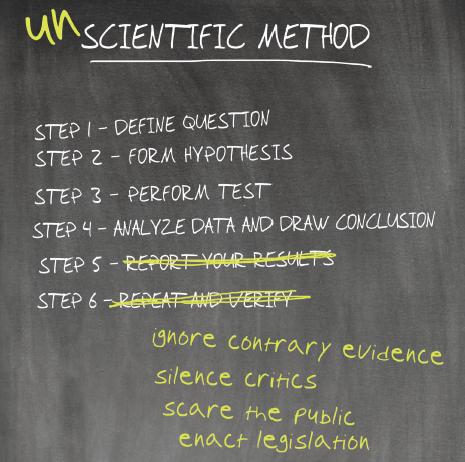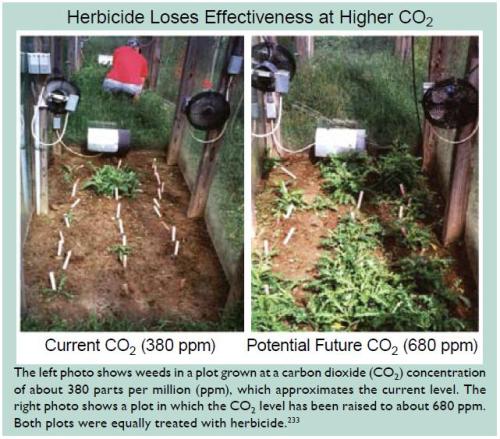The USA has its own Climate Change propaganda. The latest is Obama’s first big scientific report, Global Climate Change Impacts in the United States, signed off by Obama’s appointed President’s Science Advisor, John Holdren, the neo-Malthusian who has espoused forcible sterilization and abortion for reducing the US population. As expected, it’s a classic but crude piece of propaganda peppered with images that are designed to scare, but which are unrelated to the matter under consideration – for example pictures of floods from Hurricane Katrina, which has nothing whatsoever to do with climate change, but which was merely the result of a hurricane making landfall directly on New Orleans. The Space and Science Research Center in Florida put out a press release on July 13 with a call for Holdren and NOAA Administrator Jane Lubchenko to be removed from office because
These two individuals and other agency heads orchestrated and then signed off on the recently released government report, Global Climate Change Impacts in the United States. This report was a piece of blatant, politically motivated bad science and pure propaganda…
And in a letter to Senator Boxer, the SSRC opine that it is
an international embarrassment of American scientific expertise and is so full of misleading data, false assumptions, and invalid conclusions that it simply cannot be relied upon as a policy making reference.
The report cites 569 references, but how many readers are going to go to the trouble of looking any of them up to discover that they don’t support the position of the text, or have been so selectively quoted that they are relied on to say the opposite to what was meant?

We can’t deal with the whole report, so we will mention one example from the chapter on agriculture (PDF here) as we have been considering the effects of elevated CO2 on plants. This example will demonstrate the lying propaganda, and the disregard and crafty twisting of the evidence; and this example is typical of the whole report, which is a compendium of lies.
The poster boy of the agricultural section of the report is the following image, which also appears on the associated website. The report text states
The most widely used herbicide in the United States, glyphosate (RoundUp®), loses its efficacy on weeds grown at carbon dioxide levels that are projected to occur in the coming decades (see photos below).
Higher concentrations of the chemical and more frequent spraying thus will be needed, increasing economic and environmental costs associated with chemical use.

What this is supposed to show is that as CO2 increases, the effectiveness of a common herbicide decreases. Notice anything strange? The experiment is completely unrepresentative of an agricultural situation since it is evident from the picture that there are no crops present. Well, who sows and grows fields of weeds, and who wastes time and money spraying weeds with herbicide where there are no crops growing? Who cares about weeds where crops aren’t grown? No-one.
Don’t be deceived. What the picture actually shows is that weeds, like all plants, thrive under elevated CO2, can better utilize available resources, and can overcome stresses better (in this case, the application of herbicide, which is an extreme stress). This is expected, and we pointed this out in previous posts (World Food Supplies and Carbon Emissions, and Photosynthesis and CO2 Enrichment). The picture says nothing whatsoever about what would happen to the weeds under herbicide stress when they have to compete for the same resources (water, nutrients, light, CO2 etc) as herbicide-resistant crops growing in the same patch. What we find in the real world (as we will demonstrate below) is that in a competitive environment (which is the only real-world agricultural scenario worth considering) the fertilizing effects of enhanced CO2 on crops far outweigh any slight mitigation of herbicide stress on weeds. The result is that in elevated CO2 environments, crop yield is far higher for a given application of herbicide, or alternatively for a given crop yield the herbicide requirement is considerably reduced. Thus the report is lying, the scientists who compiled it are lying, and they know very well that they are lying. The trouble is, we’re not supposed to be informed well enough to know it. We will now prove it.
Recent Comments